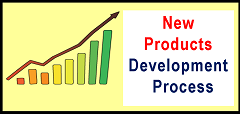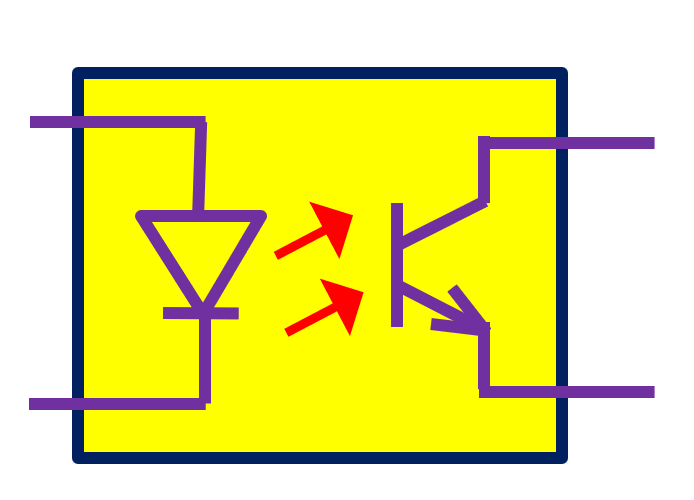You will learn in this post about the new product development stages like process, and various methods to successfully complete the product. I explain the 11 stages of the new product development process.
This is applicable for electrical and electronics products, but useful for other types of products also.
These 11 stages of new product development are based on the experience of the author in developing a number of new products.

Stages of new product development process
There are following 11 stages of the new product development process:
- New product selection
- To understand our design capability
- Technoeconomical study
- Lab model
- Production planning
- Issue of production documents
- Manufacturing or 1 or 2 number product
- Type testing
- Modification
- Field trial
- Make more number of product, test in many fields, and declare as a proven design
Now I explain in detail all 11 stages of the new product development process.
New product selection – Stage 1
The first is the first stage of the 11 stages of the new product development process.
we must decide about the new product, we want to do development. Even many times our final objective is to bring the new product to the market and sell it. But there may be other reasons for developing new products.
We decided about the new product according to the following points:
- Demand in the market
- More economical version of available product
- Made in India object
- What is needed
- Needed for own use. This is to use this new product in some other big product or some other use like testing or learning etc.
- Learning new technology. This is helpful if we want to import technology. So we can negotiate better terms if we know about the product.
Product design capability, can we make it – Stage 2
Even if we decide on a possible new product, we must make sure that, can we make it some way. There is no use in start developing a new product, which is difficult to make by us.
So we check the following point before tasking the final decision to make a new product.
- Available expertise, knowledge (In-company)
- Talents and capability of the available engineers.
- Availability of the facilities within the company or outside.
- Fund available
Techno economical study – stage 3
Then we do a techno-economical study for product development as follows
- Techno economical study of the new product
- Technically feasibility
- Profitable to company and finance implication
If everything is OK, then go ahead.
Now the product leader and team are formed. Team starts working
Stages of New Product Development – Lab model, Stage 4
In this stage, first, we make a lab model of the product. This is to check the working of the concept of the design. There are the following activities in this stage.
- Product design on paper
- Simulation if any
- Assembly
- Testing
If the team successfully develops and makes the product work in the lab and does testing. Then we go ahead to the next stages of the new product development.
A large percentage of lab-working products fail at a later stage and are closed. The reason or causes for this failure is discussed in the last part of this article.
New product development stage 5 – manufacturing of a commercial product
Now we make the list of components required for making the product for this stage of the 11 stages of the new product development process.
There may be two types of materials.
1 – Components that can be manufactured in the company
For this kind of material or components, we make detailed manufacturing, and testing information for all the materials.
2 – Components to be bought from the market
For these kinds of materials or components, we make detailed purchase documents for each and every item (even for a screw).
The list of documents for the components to be purchased from outside is as follows:
- Drawings
- Technical specification
- Applicable IS standard
- Testing methods to check components
- List of the Vendors (supplier or manufacturer)
Sometimes there may not be any supplier of a few components. In that case, we work with the supplier and help them to manufacture the components.
Stage 6 – List of production documents
Now, In this stage of the 11 stages of the new product development, we make the necessary documentation to manufacture the equipment or product within the company. A few examples of such documents are as follows:
- Testing on purchased material
- Assembly drawings
- Wiring or connection diagram
- Detail in-house testing etc
Stage 7 of the 11 stages of new product development
We make 1 or 2 number of products or equipment as per the above documents. This should be done by the production department and not in the lab.
Further, we also apply for a patent for the new product to the patent office if applicable and necessary. This is to protect the business of the company. If we do not apply for a patent, then someone else may apply for the patent.
Stage 8 of the 11 stages of the new product development
Now we need to do type tests of the product to meet various standards. Many of these types of tests may be required to be done by outside national or international agencies. This required too much effort, time and funds, and knowledge.
Then the test certificate we get from such agencies will help to prove the quality of the product.
Stage 9 of the new product
Then, after performing type tests at various agencies, we may need a few modifications in the product based on tests. We modify design, and documents both.
Then we do type tests again if necessary.
Stage 10 – Field trial of new product
For the field trial, we can install a few number of the products at some place preferably at some customer site. Then we will observe the proper working of the product for a few months.
If everything is OK – Then we say that product successfully developed. But this is still not a proven design product.
Stage 11 – Proven design and successful launch of the product
More products are made and Installed at various places. Observations are made.
All should work properly for a few months. then only the product is declared successfully developed and proven.
Extra knowledge as per experience – Why did product development fail?
When we develop a new product, this may also fail finally during some stages of the new product development. This may be due to many reasons. A few causes of product development failure are as follows:
1 – Field trial conditions are different than assumed –
We test out the product in the lab for limited functions. We may not consider all design requirements during the design stage.
For example, If we make a DC power supply and test it for resistor load. But in actual conditions, there may be a capacitor load also. And our product may not work for capacitor load.
Further, many times there will be a functional failure and damage due to the high electrical and magnetic noise in the electrical system in actual field working conditions.
2 – Design reliability problem
I will give an example related to my design of a new product.
I designed one electronic module during the initial stage of my job. That electronic module worked properly in the lab.
However, when the production department made 10 numbers of the product, then most of them failed during testing. A BJT transistor was burning out.
This failure was due to a lack of experience and knowledge at that time during the design stages of the new product development. However, this failure changed my way of thing about design. And failure never repeated in any new product design in the next few decades.
3 – Customer requirement change after commissioning
Our one of the very big and expensive power system products was not working, as the customer could not supply necessary electrical supply system of agreed system short circuit level. The system short circuit level of the electrical system was much less than agreed upon. This was creating instability and overvoltage.
Even if it is not the designer’s fault and hardly anything can be done. But it is certainly not a welcome condition.
4 – Ambient condition
Many times product fails due to the different ambient conditions that is designed for (or not considered at all during the design stage due to lack of experience).
These kinds of failures may be related to high ambient temperature, moisture in the air, salt (like the near sea), vibration (like on a train), high wind (for outdoor equipment), protection class, improper cooling of the equipment, etc.
5 – Failure during type test – Noise
Many pieces of equipment do not pass the type test for EMC testing for noise (for electrical and magnetic noise) at external testing agencies. They may also fail during the protection class tests for water and dust.
6 – Unkown reason for failure
Sometimes the equipment fails for a totally new reason not known to us (due to a lack of knowledge at the design stage).
During the testing of a special design CT for short circuit test, the CT looked passed. However, the testing agency cut the core to check the inside of the core. This is to see whether the orientation of the grain particle inside the iron core of the CT got disturbed or not.
A failure in the design of a new product during the initial stage of our profession is an opportunity to learn more and not a disappointment.
For a detailed understanding watch the the video:
I hope that you enjoyed the article on new product development stages with 11 stages.
If so, then subscribe to my YouTube channel.
Further, read an article on electrical equipment on how to use open circuit CT transformers.
Continue reading about the power factor.
Further, read AC or DC which is more dangerous.
About the author – G K Agrawal B.Sc and B.Tech (from HBTU Kanpur), Retd. Sr DGM Design (BHEL), the inventor of patents, has lifelong industry experience in the electrical and electronics design field of R&D. He worked for BHEL. He shares his experience and knowledge on blogs and YouTube. Read the profile here.



Very good information.
Thanks
Hey! I’m at work browsing your blog from my new iphone! Just wanted to say I love reading through your blog and look forward to all your posts! Keep up the superb work!